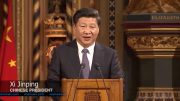Is 2015 the year when the world will finally decide on a major new global agreement on climate change? Pundits are beginning to put their cases as to whether the Paris summit in December will “save the earth”, or will end up as another Copenhagen, as in 2009 when massive anticipation resulted in inevitable post-conference disappointment. In a speech this week Prince Charles insisted that 2015 will be a make-or-break year for the climate. But is Paris where the real action will be?
Like it or loathe it, it’s now about the money. Cost curves, China, India, bankers, entrepreneurs and the concept of “loss and damage”, in other words, financial risk versus opportunity, are now more important to what is happening to try and prevent irreversible climate change than any of the technical details of the negotiations.
Let me throw some numbers at you. Solar has now moved so far down the cost curve that if you live in Queensland, you can buy a 6kW rooftop solar PV system for $7,800 ($4,000 with the RET subsidy). Ignoring subsidies now and then, such a large system would have cost $54,000 five years ago. This system will supply you with electricity at a fraction of the price you currently pay to your electricity retailer.
At a global level, the dramatically positive positions of solar and wind on their respective cost curves mean that the $310bn invested in clean energy last year paid for almost twice the clean electricity capacity compared with three years ago.
China has understood for many years that clean energy development would bring them greater energy independence (although they are still significantly reliant on Russian gas) as well as trade income, so has sought to dominate solar manufacturing worldwide. As a result, four of the five largest solar panel manufacturers globally are Chinese companies and China is investing US$294bn in renewables over the five years to 2015 (that’s not a typo; it’s 3% of China’s GDP). In turn, Germany has gone from selling solar panels to selling solar manufacturing equipment to China.
India has recently announced plans for a $100bn expansion of solar power by 2022. Not $1bn or $10bn, but $100bn – enough for almost 100,000 MW of clean energy (which would be more than 10% of India’s total generation capacity). As part of the US-India climate agreement announced by Obama and Modi on Sunday, the US agreed to assist with financing India’s clean energy development.
Entrepreneur Elon Musk has led electric car startup Tesla through a series of near-death financial crises to make the company’s innovation available to others. Last year, Tesla declared its patents available for anyone to use in good faith saying “it is impossible for Tesla to build electric cars fast enough to address the carbon crisis”. Tesla is also building a $5bn battery factory in Nevada, just one of multiple investments that have experts agreeing that battery storage will also quickly fall down the cost curve to be commercial for mass deployment within a decade. Citigroup’s latest report says this will be a US$400bn industry by 2030 – just 15 years away.
Forward-thinking banks have been investing on this rising tide. In 2007 Citigroup set an investment target of US$50bn over 10 years in alternative energy, clean technology and other carbon-emission reduction activities, which it has already exceeded. US$11bn of climate-themed bonds were issued in 2013, $35bn in 2014 with $100bn estimated for 2015. Climate bonds include financing for a wide range of emissions reducing activities from rail lines to forestry to water recycling.
The Green Climate Fund has reached its start-up goal of $10bn with an ambition of reaching $100bn a year by 2020. These funds will be invested in developing countries to limit or reduce their greenhouse gas emissions and assist them to adapt to climate change. This is a partial response to calls for the developed world to compensate for “loss and damage” inflicted on countries that have not significantly contributed to the causes of our altered climate.
So there is plenty of money to be made.
And then there is money to be lost.
On the flip side of finance, there is the growing momentum around divestment. The Fossil Free divestment campaign started by American environmentalist Bill McKibben and 350.org has been growing fast. Organisations, from the Australian National University to the Uniting Church in NSW to the heirs of the Rockerfeller oil fortune, have signed up to a total withdrawal sum of $50bn from fossil fuel investments. Even UN secretary general Ban Ki-moon has been urging reduced investments in fossil fuels and, more subtly, World Bank president Jim Yong Kim has called for financial regulators to enforce disclosures of climate risk.
As Matthew Yglesias notes in Slate, such a campaign is as much moral as financial.
“Divestment says: If you make your fortune digging fossil fuels out of the ground and poisoning the air by burning them, then people are going to shun you and your business.
However, the concept of the “carbon bubble” or “unburnable carbon” – that 80% of fossil fuels on the balance sheets of public and private companies and governments must stay in the ground if temperatures are to stay below 2C – is gaining credence. A report by analysts at Citigroup in mid-2013 warned of the likelihood that fossil fuel reserves in Australia will face significant value destruction in a carbon constrained world. Insurance underwriters too are heeding their actuaries and are already incorporating climate change risk into their models – and adjusting premiums and coverage terms and conditions at all levels.
Similarly, the call for an end to fossil fuel subsidies is growing louder. It was made jointly by the World Bank, the IMF, the International Energy Agency and the OECD in October last year. Now even the Economist is calling for the annual $550bn of subsidies for the extraction and use of fossil fuels to be removed (you’ll note that figure is the largest one in this article). And, Australia notwithstanding, carbon pricing is now in place or scheduled to be implemented in 39 national and 23 sub-national jurisdictions. The world’s second largest carbon trading market opened for business this month in South Korea.
When financial flows start changing because the people who control the purse strings see the future, then you know change is underway.
Reducing climate change mitigation to a financial conversation might be abhorrent to Naomi Klein, but unless financial institutions can see a way of making a dollar, then we are not going to make the change as fast as needed. Of course international agreements and global leadership is absolutely vital, especially in setting the policy and regulatory framework. Solar PV would never have become so cheap so fast without the German government’s policy settings, including feed-in-tariffs. But solely focusing on the Paris negotiations can distract us from the national, regional and city policy changes that are needed (including re-instating a carbon price in Australia) and the regulatory and financial support needed for disruptive innovations (for example, removing fossil fuel subsidies would lower the barriers to entry for clean energy).
It might seem deflating or unethical, but someone has to get rich reducing carbon pollution. Just as new business models developed with the end of the African slave trade or the introduction of water restrictions, threats to vested interests are opportunities for others. The particularly good news in the case of climate change is that a lot of that money is going to be made bringing clean energy to people who don’t have it today or reducing the amount of energy the rest of us use. That means solar powered lights in Africa, electric buses in Brazil, cleaner cookstoves in Cambodia, and yes, some fat banker bonuses in London, Songdo and Beijing.
Gabrielle Kuiper
Originally published in the Guardian
5 February 2015






Be the first to comment on "It might seem unethical but someone has to get rich fighting climate change"